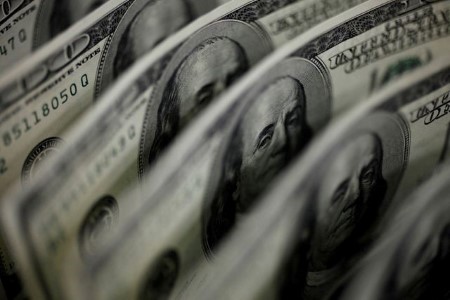




Inflation Update: Green light for easing
 DOWNLOAD
DOWNLOAD

December Economic Update: One for them, one for us
 DOWNLOAD
DOWNLOAD

Philippines Trade Update: Trade trajectories trend along
 DOWNLOAD
DOWNLOAD


Yields ease on solid demand at Treasury bond auction

NEW YORK – Treasury yields slipped on Thursday amid relief that all USD 125 billion in new note and bond supply this week was absorbed smoothly, allowing traders to focus on pivotal inflation reports for the Federal Reserve’s higher-for-longer rate strategy.
The Treasury sold USD 25 billion in 30-year bonds on Thursday, at a high yield of 4.635%, lower than where the yield on the screens was at the close of competitive bidding, indicating strong demand.
A bid-to-cover ratio of 2.41 was higher than the market was expecting, according to Subadra Rajappa, head of US rates strategy at Societe Generale, New York.
The 30-year yield fell after the auction, showing the result was well received, and was last down two basis points from late Wednesday at 4.6116%.
“We actually had a pretty decent 30-year auction, all things considered,” Rajappa said. “This whole week has been pretty much about Treasury supply and corporate supply. It’s a wait-and-see game until CPI next week.”
The government got solid interest at a USD 42 billion auction of 10-year notes on Wednesday and a USD 58 billion sale of three-year notes on Tuesday.
The April Producer Price Index report comes on Tuesday, and the closely followed Consumer Price Index next Wednesday. Combined they will provide insight on whether inflation has resumed its downward trend toward the Fed’s 2% target rate.
“There is a reason the CPI has supplanted the employment report as the biggest market mover on the economic calendar,” said Chris Low, chief economist at FHN Financial in a daily client note. “As we try to anticipate how the Fed conversation will evolve next, it will depend more than anything on what CPI inflation does next Wednesday.”
Yields firmed a smidge after San Francisco Federal Reserve President Mary Daly echoed statements by Fed officials earlier in the week, saying during afternoon trade that there is “considerable” uncertainty about where US inflation will head in the coming months, while adding she still has faith that price pressures are continuing to ease.
In early trade, benchmark yields briefly dipped after news that initial claims for state unemployment benefits increased 22,000 to 231,000 last week. That was higher than the 215,000 expected by economists polled by Reuters and could be good news for the Fed as further evidence that inflationary labor-market tightness is ebbing.
“If you just read it on the surface, it looks like one of the uglier numbers that we’ve seen in the last several months,” said Thomas Simons, a money market economist at Jefferies in New York, but “volatility around the first of the month is not unusual.”
Yields fell hard on Friday after April payrolls came in below expectations. That followed the Federal Open Market Committee meeting, where it held rates steady but said it still expects a rate cut to be its next move even as inflation remains stubbornly high.
Traders are pricing in the probability of two 25 basis point cuts this year, with the first expected in September, but any cuts will likely depend on whether inflation can resume its easing trend.
The benchmark 10-year note yield was last off 2.6 basis points at 4.457%. On Tuesday it hit 4.42%, the lowest since April 10
Two-year yields, which typically move in step with interest rate expectations, fell 2.8 basis points to 4.8154%, remaining in a range since Friday’s fall to 4.806%, their lowest since April 5.
The inversion in the yield curve between two-year and 10-year yields deepened almost two basis points to minus 36 basis points.
(Reporting by Alden Bentley and Karen Brettell; Editing by Jonathan Oatis and Nick Zieminski)
This article originally appeared on reuters.com





 By Reuters
By Reuters